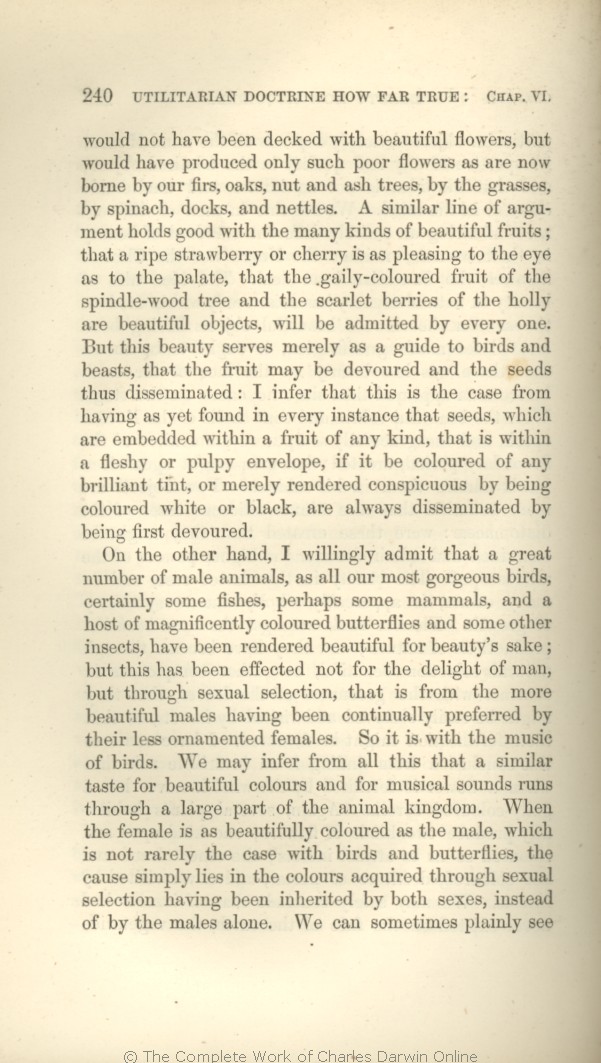would not have been decked with beautiful flowers, but would have produced only such poor flowers as
are now borne by | are now borne by 1866 |
| we now see on 1869 |
| we see on 1872 |
| by the grasses, by 1866 |
| on grasses, 1869 1872 |
| nettles. 1866 1869 |
| nettles, which are all fertilised through the agency of the wind. 1872 |
| the many kinds of beautiful 1866 1869 |
| OMIT 1872 |
| palate, 1866 1869 | | palate,— 1872 |
| objects, 1866 1869 | | objects,— 1872 |
| that 1866 1869 |
| in order that 1872 |
| seeds thus 1866 |
| manured seeds thus 1869 |
| manured seeds 1872 |
| in every instance 1866 1869 |
| no exception to the rule 1872 |
| seeds, 1866 1869 | | seeds 1872 |
| which 1866 1869 | which 1872 |
| embedded 1866 1869 |
| always thus disseminated when embedded 1872 |
| envelope, 1866 1869 | | envelope), 1872 |
| merely 1866 1869 | merely 1872 |
| coloured 1866 | coloured 1869 1872 |
| black, 1866 1869 | | black. 1872 |
| always 1866 1869 | always 1872 |
| disseminated 1866 1869 | disseminated 1872 |
| being 1866 1869 | being 1872 |
| first 1866 1869 | first 1872 |
| devoured. 1866 1869 | devoured. 1872 |
|
On the other hand, I willingly admit that a great number of male animals, as all our most gorgeous birds,
certainly | certainly 1866 | certainly 1869 1872 |
| perhaps some 1866 | | some 1869 | | reptiles, and 1872 |
| butterflies 1866 1869 | | butterflies, 1872 |
| and some other insects, 1866 1869 |
| OMIT 1872 |
| beauty's 1866 1872 | | beautys 1869 |
| not for the delight of man, but 1866 1869 |
| OMIT 1872 |
| is from 1866 1869 | | is, by 1872 |
| their less ornamented females. 1866 1869 |
| the females, and not for the delight of man. 1872 |
| similar 1866 1869 | | nearly similar 1872 |
| simply 1866 1869 | | apparently 1872 |
| inherited by 1866 | | transmitted to 1869 1872 |
| 1 blocks not present in 1859 1860 1861 1866 1872; present in 1869 | | In some instances, however, the acquirement of conspicuous colours by the female may have been checked through natural selection, on account of the danger to which she would thus have been exposed during incubation.
|
|









